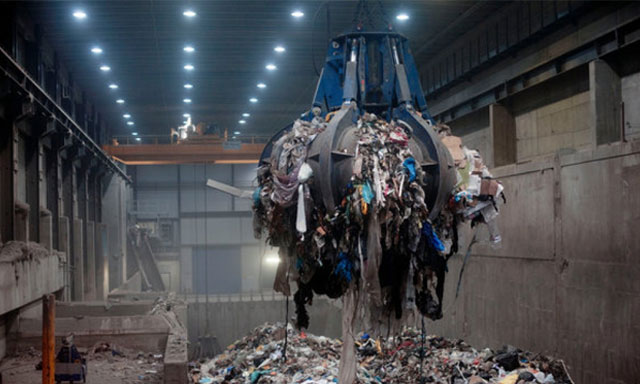The issue of garbage seems to be an eternal problem. As long as humans and other living things exist, waste problems will continue to exist. The pollutant side of waste is something that always haunts the community. In fact, in addition there are many benefits from this garbage. Depending on where we look at it.
From the data presented by Dr. Setiawan Wangsaatmaja, environmental expert BPLHD is really terrible, approximately 90% of landfills (TPA) in West Java are not suitable for use, so they are a source of disease (“PR”, 22/11).
Another when viewed from a business aspect. From the DKI waste case as an example, the volume of waste produced by the capital city is 6,000 tons / day, and is disposed of in the Bantargebang landfill, 108 hectares. In addition to being a problem, the sea of waste is also a sea of fortune for scavengers, and now it is a promising business area for waste processing companies. From the data taken from Pikiran Rakyat (Wednesday, 24/11) it was stated, the profit obtained by PT Wira Guna Sarana (WGS) with a production capacity of 2,000 tons of waste / day with a processing fee of Rp. 53,000.00 / ton or equal to Rp. 106 million / day.
That is only part of the volume of waste that is still available, 4,000 tons of DKI Jakarta waste are still waiting for processing. Can be calculated yourself the benefits.
In terms of facilities, Indonesia still needs a lot of waste treatment facilities, especially in urban areas. Technologically, the solution to this waste problem has been widely applied, but no one has answered this problem definitively. Settling the waste problem is not only from a technological aspect, but also involves the socio-cultural aspects of the community. This paper will raise the latest technology in the country for waste treatment. This technology was introduced by young researchers in the field of plasma technology, Dr. Anto Tri Sugiharto.
Technological solutions
Various waste management technology solutions from developed countries seem to have been offered before, but it seems that the technologies offered still always require a variety of special studies, given the problem of waste in Indonesia is quite unique compared to problems in various developed countries. This can be seen starting from the problem of undisciplined Indonesian culture, to the problem of government regulations which are still very weak.
However, we will still try to explore other technologies that are more appropriate to overcome the problem of waste in Indonesia. One of the latest technologies that is expected to be the best solution in dealing with the waste problem in the future is the use of plasma technology, or better known as plasma gasification and vitrification. Various basic studies have been carried out. Today in various developed countries such as in the cities of Yoshii (1999) and Mihama-Mikata (2002), Japan is developing pilot scale to improve the efficiency of this technology.
Plasma technology
Plasma is the fourth form of substance. It is an ionized gas condition that also occurs in nature such as lightning and aurora. Whereas in the field of plasma industry can be made using the electrical discharge method. The plasma formed will have a very high temperature.
Plasma gasification and vitrification is an effective method in breaking down various organic and inorganic compounds into basic elements of a compound, so that it can be reused and recycled. The most important component of a plasma gasification and vitrification system is a plasma reactor, which can consist of a plasma torch or more. Plasma torch can be formed by applying DC voltage to two electrodes. Furthermore, by giving the gas passed on the two electrodes, a plasma torch is formed with a very high temperature between 5,000 oC to 10,000 oC.
Plasma reaktor akan dioperasikan pada kondisi sub-stoichiometric atau tanpa oksigen yang masuk dalam plasma reaktor, sehingga tidak terjadi proses pembakaran. Jadi sistem plasma gasifikasi dan vitrifikasi ini bukan sebuah insinerator atau tungku pembakaran lainnya. Dengan suhu yang dapat mencapai 10.000 oC, plasma dapat menguraikan berbagai senyawa beracun dalam waktu 1/1.000 detik. Sehingga dapat mengeliminasi proses pembentukan senyawa lain dan pembentukan gas beracun yang biasanya terjadi pada sebuah pembakaran dari insinerator.
Extreme temperatures like the one above will only be obtained if we use the plasma torch system, this temperature is very necessary in breaking down molecules of organic compounds into basic compounds of gases such as carbon monoxide and hydrogen. Likewise, inorganic compounds besides can be melted into molten glass which then crystallizes (vitrified).
Generally there are three reactions that occur in the process of plasma gasification in producing synthesis gas (syngas) consisting of carbon monoxide and hydrogen gas. The first reaction is gasification or thermal cracking. In this process large molecules are broken down into gases, smaller and lighter molecules. This pyrolysis process produces hydrocarbon gas and hydrogen gas. Radically formed in this process in various ways. The end result of this process is light hydrocarbons such as methane and hydrogen.
The second reaction that occurs in the process of syngas formation is partial oxidation. Partial oxidation can produce carbon monoxide, and a more complicated oxidation process will produce carbon dioxide and water. Carbon dioxide and water are the last results of an oxidation process.
The third reaction that occurs is the reforming reaction. The reaction that occurs is a combination of reactions that occur during the gasification process. For example, carbon can react with water and produce carbon monoxide and hydrogen, or carbon can react with carbon dioxide and produce two molecules of carbon monoxide. This reforming reaction has the possibility to form fuel gas.
Process gasification will be controlled at a plasma plume temperature of 4,000 – 5,000 oC with syngas temperatures coming out of the 1,250 – 1,450 oC reactor. By maintaining the temperature above, it can minimize the size of the reactor and can produce syngas as fuel gas in large quantities. Moreover, without the need for construction of heat-resistant materials that may be used. This temperature can also be operated at room pressure, thereby reducing the expensive chamber pressure design.
Clean technology
In the future, plasma gasification and vitrification will be the best solution in waste treatment. In Figure 1. can be seen the flow of the process of gasification and vitrification of waste along with the output (output) it produces. Plasma gasification and vitrification are known as clean technology, where the final remnants of the processing process are mostly gas syntesis consisting of carbon monoxide and hydrogen gas, and metal crust that is no longer a hazardous toxic material (B3).
Reported at one of the pilot waste treatment plants in Yoshii City, Japan, the output of dioxin and furan content from the plasma process was 0.01 ng / m3. Permitted emission limits in Japan are 0.1 ng / m3 (Japan permitted emission levels). While other gases that may form in very small amounts in the plasma process such as HCl, H2S and HF can be processed further, so that they can be reused
Some benefits are also obtained by the use of plasma gasification and vitrification in waste processing including the production of syngas which is a fuel gas with a high calorific value, so that the gas or heat can be used to drive gas turbines or to drive steam turbines in a power plant. Other uses can also be used for seawater distillation processes. While the metal slag (slag) produced is known not to be a B3 material. Slags consisting of metal and glassy crystallized material can be separated by mixing water. Through this process metal can be recycled and reused as raw material. While glassy material from slag can be safely stockpiled or used as raw material for the construction of roads, buildings, and others.
Some of the above advantages make plasma gasification and vitrification considered very promising in the processing of waste and other solid waste in the future. However, when using it, are we ready to use it? Considering that the problem of waste handling as stated earlier does not only depend on its processing technology, but regulatory factors and public awareness remain the main key to successful waste management in Indonesia. This needs serious attention so that the Bojong tragedy does not recur.
Anto Tri Sugiarto, Ph.D. and Suherman, M.Sc.,
Researchers specializing in plasma at the KIM-LIPI Research Center. Staff of LIPI Bandung Information Technology Center.
Source: http://lipi.go.id/berita/solusi-teknologi-terkini-pengroses-sampah-/304

